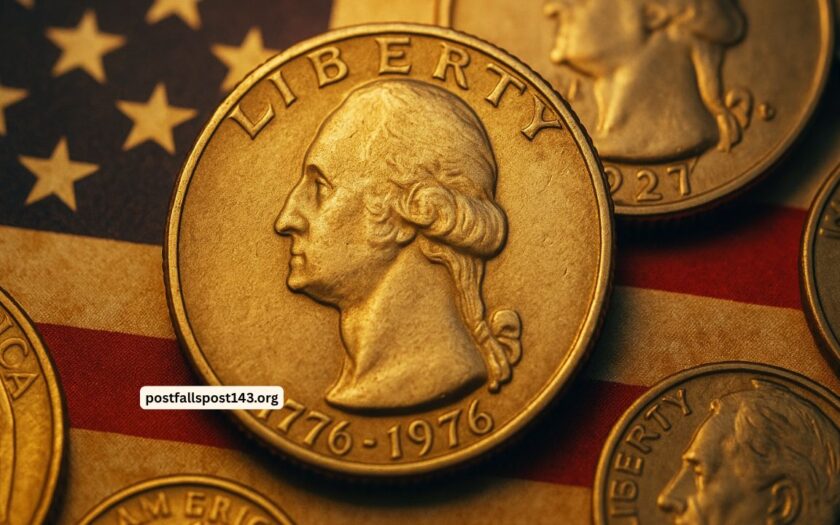The idea that a Bicentennial Quarter—minted in 1975–1976 to commemorate the 200th anniversary of American independence—could be worth $2.5 billion feels like a wild legend. Headlines recently have claimed such a coin is still in circulation.
But what do the factual details, expert analyses, and collector data reveal? Let’s explore whether this extraordinary claim holds up.
1. What Is a Bicentennial Quarter?
- Minted in two years but all dated “1776–1976”, these quarters feature a colonial drummer boy (reverse) and George Washington (obverse)
- Released from July 1975 to December 1976, they were produced in huge quantities: 809.8 million (Philadelphia), 860.1 million (Denver) clad coins, plus ~4.9 million silver‑clad uncirculated and proof coins
2. Why the $2.5 Billion Claim?
In the past week, several clickbait-style websites asserted that one rare version of the Bicentennial Quarter—perhaps an experimental die or error strike—could be worth a staggering $2.5 billion and might still be circulating
However, no credible numismatic institution, auction house, or certified registry supports such an astonishing valuation.
3. Actual Market Values
| Coin Type | Mint / Feature | Approximate Value (2025) |
|---|---|---|
| Circulation-strike (clad) | Any mint | $0.25 |
| Uncirculated (MS‑60 to MS‑65) | Any mint | $1–$5 |
| Silver-clad proof / uncirculated | 40% Silver from San Francisco | $15–$25 melt plus numismatic premium |
| Rare error (no mint mark, DDO, struck on dime) | Auction-grade mint errors | $9,000–$35,000 depending on type |
- A no‑mint‑mark Bicentennial quarter recently sold for $35,000. That’s impressive—but far from multi‑million‑dollar territory
- Silver-clad proofs or uncirculated pieces may fetch $15–$25, largely due to 40% silver content, not monster premiums
4. What Makes a Bicentennial Quarter Rare?
- Mint errors such as doubled die obverses (DDO), missing mint marks, or coins struck on the wrong planchet (e.g., dime instead of quarter) are collectible
- Mint-mark‑specific rarities: silver‑clad proof coins from the S mint (San Francisco) are rarer than circulation coins
- Condition matters: high-grade specimens (MS‑67+) and perfect proofs may sell for several thousand dollars at numismatic auctions
5. Could a $2.5 Billion Coin Exist?
Not realistically. The idea likely stems from misinformation, viral headlines, or misunderstanding of value terminologies.
- No record of a Bicentennial Quarter fetching even a single million in verified sales exists.
- For perspective, top coin sales (e.g., rare 1913 nickel, 1804 silver dollar) still linger in the $4–$10 million range—not close to $2.5 billion.
- Experts agree: the face‑value issue of nearly 1.7 billion quarters rules out such rarity
6. So, Could You Have One?
Absolutely—but it’s almost certainly just a regular 25¢ coin.
Even if you received a rare error specimen, you’d be better off with $9,000–$35,000—still excellent, but far from headline-grabbing billions.
This massive $2.5 billion valuation is pure myth. The highest-known Bicentennial Quarter sales peak at tens of thousands, not billions.
If you find one in your pocket, it’s almost certainly worth 25 cents, though a rare error could fetch you a nice four-figure payoff—but don’t expect a life-changing fortune.
FAQs
Could a normal Bicentennial Quarter be worth millions?
No. Regular clad quarter in circulation is worth just face value, and high-grade silver-clad proofs are usually under $25.
What rare Bicentennial quarter errors exist?
Valuable variations include missing mint marks, doubled‑die obverses, and planchet errors like strikes on dimes. These can sell from $9,000 to $35,000+.
Why do some articles claim a $2.5 billion value?
These are clickbait headlines based on unverified rumors. No reputable auction, coin registry, or numismatic authority confirms any Bicentennial Quarter valued anywhere near $2.5 billion.

